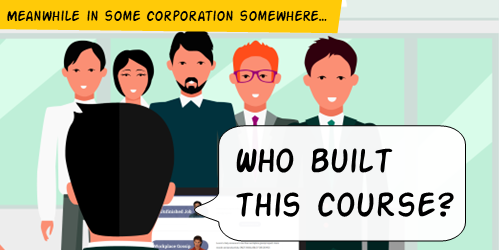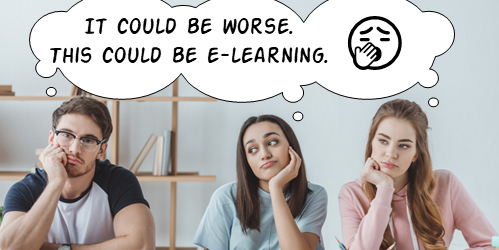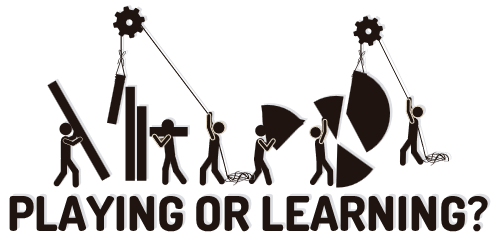Are You Going to Lose Your E-Learning Job?
October 25th, 2022
The organization’s ultimate goal is not to build a course. Instead, the goal is to meet some sort of performance need. And in that sense, the e-learning course is a solution to meet an objective.
And this is where e-learning often falls down.
Effective training programs successfully meet learning objectives that aren’t fuzzy and non-measurable. On top of that, e-learning is usually just part of the overall training program. So it’s not the end-goal.
I’m often asked about how to build better e-learning. From my perspective, many of the courses I see aren’t very good. There are all sorts of reasons for this, but the main reason is that the courses share so much content that they present the illusion that they’re complete. But usually, they’re just content-heavy andnot tied to any meaningful objectives. Thus, they usually produce little to no tangible benefit for the organization.
If you didn’t see it, here’s an interesting article where training gets a large part of the blame for an organization’s $8 billion attrition rate. Is it fair that training gets the blame? I don’t know. But the key consideration for those of us in training is that we need to be aware of the perception and make sure that our programs are designed to actually meet objectives.
When we design e-learning courses, we need to think about the overall objective of the training program and design our courses to meet that objective. All too often, I see courses that are nothing more than glorified and interactive PowerPoint slides. These courses might be fine if the only objective is to provide information, but if the objective is to actually change behavior or improve performance, then these types of courses are doomed to fail.
The bottom line is that a course is only as good as the objectives it’s designed to meet. If you’re not sure what the objectives of your training program are, then you need to go back to the drawing board. But if you have a clear understanding of the objectives, then you can design a course that will actually help your organization meet those objectives.
And that’s the challenge for many of us who build courses. We build a lot of content that we call e-learning. But does what we build contribute to success? How do you know?
Events
- Everyday. Check out the weekly training webinars to learn more about Rise, Storyline, and instructional design.
Free E-Learning Resources
 |
 |
 |
|
Want to learn more? Check out these articles and free resources in the community. |
Here’s a great job board for e-learning, instructional design, and training jobs |
Participate in the weekly e-learning challenges to sharpen your skills |
 |
 |
 |
|
Get your free PowerPoint templates and free graphics & stock images. |
Lots of cool e-learning examples to check out and find inspiration. |
Getting Started? This e-learning 101 series and the free e-books will help. |






1
comment